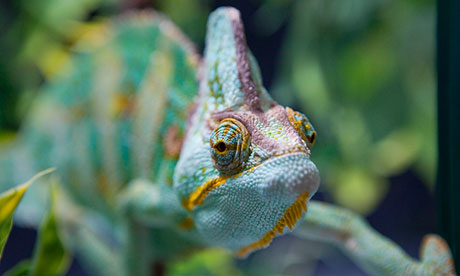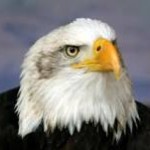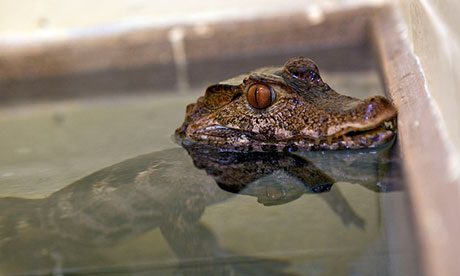On an industrial estate less than a mile from Heathrow, an anonymous yellow-walled building echoes with barks, mewls and shrieks. The Heathrow Animal Reception Centre (HARC) is the first stop for every one of the 37 million animals that pass through the airport every year, whether it is an elephant moving between zoos, or an impulsively purchased gift someone has tried to sneak through customs.
“We’ve had a couple of tortoises down a man’s pants,” says the centre’s deputy manager Susie Pritchard, “and some turtles in someone’s bra.”
Turtles, it turns out, are particularly prevalent. Animal welfare officer Chris Sampson explains that snapping turtles, such as the one lurking beneath a log in one of HARC’s rooms, are often abandoned when they become too difficult to look after. Next door is a cayman, seized by police from an owner without a licence to keep dangerous wild animals. Both the cayman and his neighbour are now used as part of the centre’s hazardous animals training programme.
HARC houses around 20 dangerous reptiles. Alongside an innocuous-looking chameleon and a pair of monitor lizards, two huge pythons lie curled in the corners of their tanks. One was discovered roaming around Heathrow’s car park, and the other was given up by an owner who found it too aggressive. Exotic pets are increasingly popular in the UK – the RSPCA dealt with 7,073 calls about 32,426 exotic animals in 2011 – and for the authorities who have to deal with them, HARC is an invaluable training resource: “It’s about explaining to people what you need to do if you go into someone’s house and there’s a room full of rattlesnakes,” says Pritchard.
 A confiscated Yemen chameleon. Photograph: Graham Turner for the Guardian
A confiscated Yemen chameleon. Photograph: Graham Turner for the Guardian
Most of HARC’s visitors enter the UK legally, and the centre reunites 17,000 cats and dogs with their anxious owners every year. “It’s like arrivals at terminal four,” says Pritchard. “People react like they’ve not seen their pets in a decade.” In reality, they are normally only in the centre a few hours, long enough for staff to scan the animals’ microchips and confirm rabies vaccinations (both legal requirements for pets entering the UK), and in the case of long-haul flights, let them get some exercise. Regulations governing animal transit are strict – unlike budget-airline passengers, dogs and cats need to be able to sit, stand and turn around – and the City of London, which operates HARC, is responsible for ensuring airlines meet those welfare guidelines.
The glass-walled reception has seen its share of famous faces, and a signed headshot above the door marks out Orlando Bloom’s dog Sidi as a frequent visitor. “That always gets the girls quite excited,” says Pritchard. “You’ll get staff appearing on shift who aren’t on the rota.” But for Pritchard, Hollywood stars are far less interesting than some of HARC’s more highly strung arrivals: “I got a call last Christmas asking if I might chip-read four cheetahs. That was a bit of a handful.”










 A confiscated dwarf crocodile at the Animal Reception Centre, Heathrow. Photograph: Graham Turner for the Guardian
A confiscated dwarf crocodile at the Animal Reception Centre, Heathrow. Photograph: Graham Turner for the Guardian
